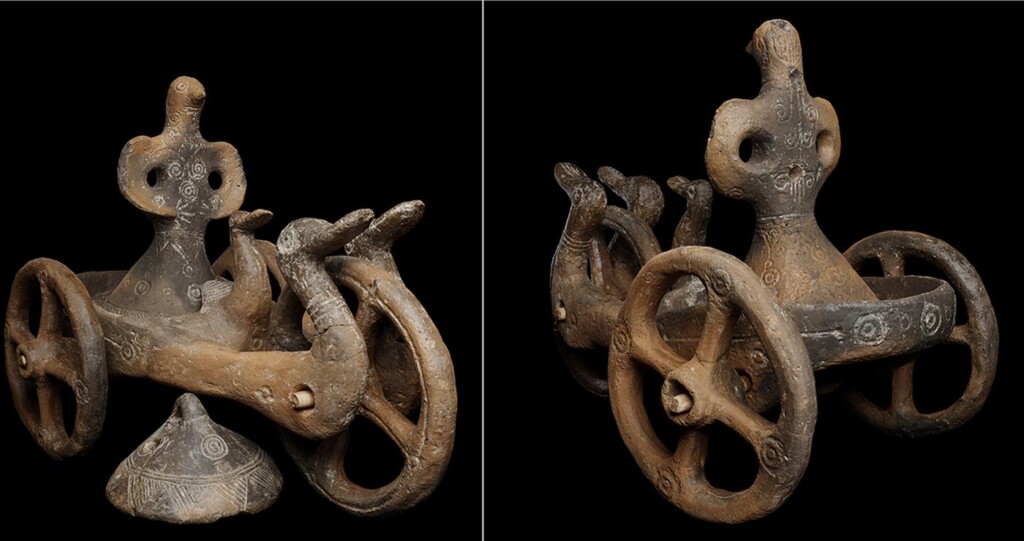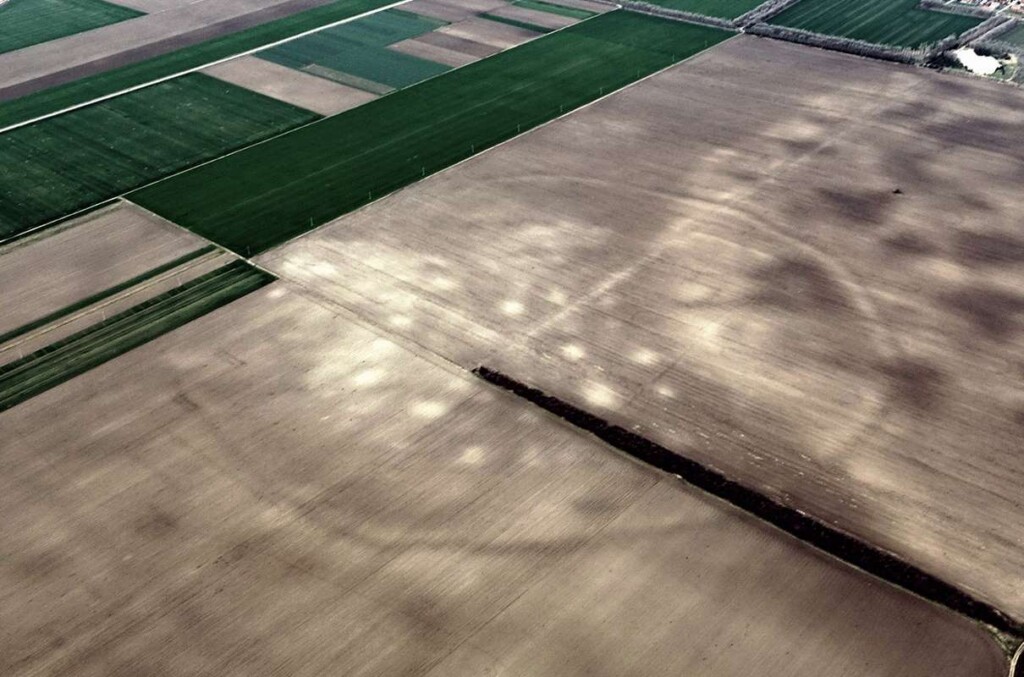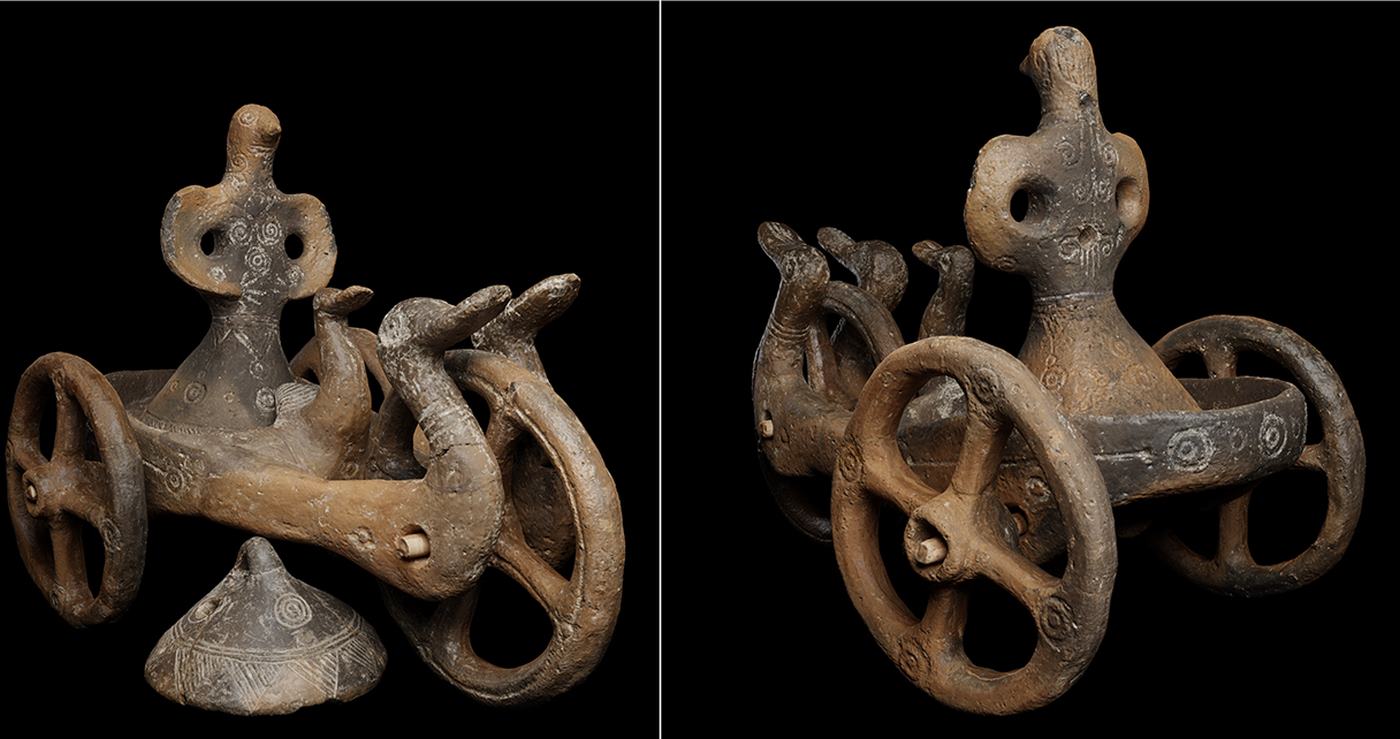
In 2015, a research team got the idea to use aerial surveying and satellite imagery to map the expanse of Bronze Age settlements in Northeast Serbia’s Pannonian Plane. What they found was shocking—over 100 previously unknown habitations that pull the history of the Balkans down squarely into the time of the Myceneans, the ancient Egyptians, and Babylon.
The character of society on the Pannonian Plane 3,000 years ago, the authors write, was almost unique in the world, as it consisted of dozens of large enclosures protected by ditches and earthen ramparts, some of which were over 2,400 acres in internal area, with over 15 miles of defensive works.
These enclosures were built close to major rivers like the Tisza, Bega, and Timis, and ran about 100 miles along a north-south corridor which the researchers believe was part of a key trading network for bronze that was going down to the Mediterranean, part of what is now being called the Lower Pannonian Network, and which crosses into Romania as well.
So that’s the macro element of the discovery, but what about the micro; who were the people who made these enclosures and what were their lives like?
The discovery was made by a large international team from Serbia, Ireland, England, and Slovenia, and it started in 2015 when they began to use satellite photos to look at the flat agricultural area in the northeast of the country. Once they identified unusual shapes in the land, the team used a small aircraft to survey them from the sky before visiting some on foot and conducting excavations.
The excavations turned up a lot of household refuse, animal bones, pottery shards, and other everyday elements that provided a way to radiocarbon date the sites, which produced the timeline of about 1,600 BCE to 1,200 BCE.

“It’s a new story that changes our knowledge of the late Bronze Age and the Balkans,” study co-author Dragan Jovanović, an archaeologist at the City Museum of Vršac, told Science Magazine. “It’s pretty amazing it remained hidden until now.”
YOU MAY ALSO LIKE: Dazzling Ancient Bronze Sword Found in Germany ‘Still Shines’ After 3,400 Years
Hard details about the people and their culture remain unknown, including evidence of buildings, and so historians are hesitant to ascribe any certainty to the character of the sites. They could be ceremonial centers or even a way to protect cattle or sheep.
However, one aspect which is noteworthy is the proximity of each one to all the others. From the top of the raised earth walls, a Bronze Age Serb would have been able to see another such enclosure or even several others. The researchers hypothesize that they were made and maintained by something like a clan, or a small collection of families, that may have collectively been involved in the bronze trade.
A recent analysis of tin collected from shipwrecks in the Mediterranean found that in order to satisfy the market demand for bronze in the civilizations of the time, tin to make bronze had to be imported all the way from Uzbekistan.
This necessitated a network of small-scale local communities of middlemen or nomads, or both, that had to be able to negotiate, protect their goods, and travel within a vast, disparate network that relied on inter-lingual, inter-cultural, and inter-geographic exchange.
MORE ON THE BRONZE AGE: Historians Stunned: Uzbekistan Nomads Supplied a Third of the Bronze Used Across Ancient Mediterranean
Certain evidence of warfare is present, such as a bronze sword and clay models of chariots discovered in cemeteries in the enclosures, but the builders of the enclosures were doing their construction within sight of their neighbors.
“They’ve opened up a whole new avenue for excavation and research,” University College London archaeologist Miljana Radivojević, who was not part of the new research, told Science. “These dots weren’t connected before, which makes this research valuable.”
SHARE This Super Exciting Development In Bronze Age Study In Europe…




















